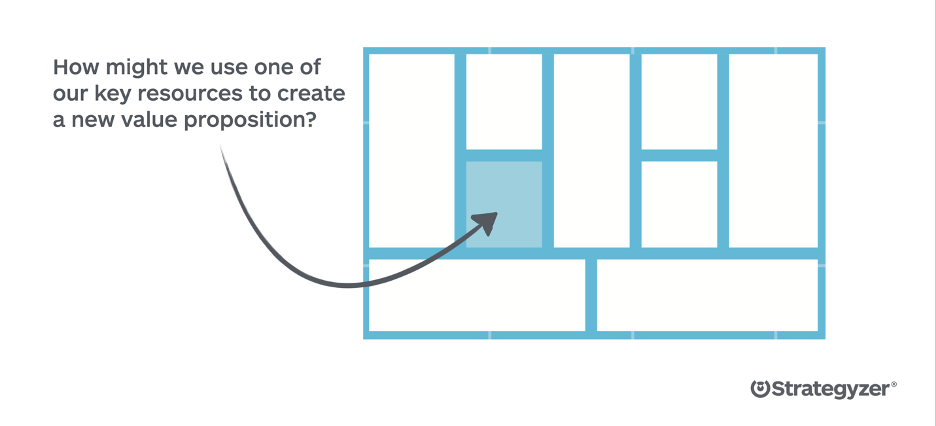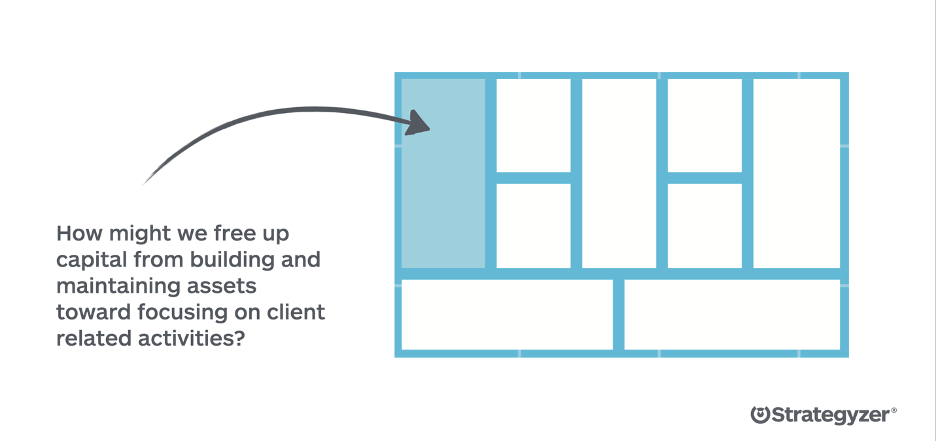While these challenges have proved to be too great for many businesses, the pandemic related constraints have also spurred a great deal of innovation, with many businesses using these constraints to pivot their business model remarkably well.
While under normal circumstances, pivoting’s one business model is a risky move, the unprecedented pressure brought on by the pandemic has made pivots essential to the survival of businesses. This blogpost is dedicated to discussing 4 innovative business model pivots in the age of the pandemic, and how they could be relevant for your business.
In our book The Invincible Company, we created a series of trigger questions framed around the 9 building blocks of the Business Model Canvas. These questions are meant to help innovators understand how putting hypothetical constraints on your business model can ignite innovative business model design. We have framed these 4 pivots using the trigger questions to enable anyone to use them in their business model design.
Luxury sanitizer
French multinational LMVH converted its’ perfume factories into hand sanitizer factories in early March, to supply French authorities and European hospitals with free sanitizer. This pivot highlights their ability to find a new purpose for their existing key resources. While this move was not geared towards creating profit in the short term, it did create value: in France and Europe, LVMH is now seen as a brand that cares and that stepped up for society is a moment of dire need.
This perception is valuable as it responds to the growing trend of consumers favouring brands “perceived as doing more for society”[1] (HBR 2020) Moreover, not only did this humanitarian activity enable the French multinational to gain a strong footing in the ‘responsible corporations’ sphere, but it enabled it to keep factories open and to continue having workers come in for work, ensuring a continuation in their production and minimizing the risks of shortages.
Trigger question: How might we use one of our key resources to create a new value proposition?
Much like in the case of LVMH, your key resources can be used for a plethora of activities. Have you considered other activities that might better serve your customers or better yet, complement your current activities? By forcing yourself to come up with different uses for these key resources, you might just find your next venture.

A new home in tech
The tech giant IBM used the need for work from home policies as a result of the pandemic to kickstart a massive shift towards a permanent work from home (WFH) culture. While a plethora of businesses have seen the value in WFH - both in terms of bottom line and productivity - few have been willing to standardize this ‘trend.’ IBM smartly used the pandemic to normalize WFH and to shift 75’000 employees globally to permanent WFH - more than 20% of the company’s global workforce.
Not only did this pivot leverage those individuals that prefer working from home, it also enabled massive savings for the firm. These savings added up to $50 Million (Forbes)[2] as IBM was able to drastically reduce its real estate and office costs. By seeing the need for WFH not as a threat but as an opportunity, IBM was able to leverage the potential benefit of this newfound constraint.
Trigger question: How might we free up capital from building and maintaining assets toward focusing on client related activities?
In this case, you should challenge the premise that your key costs are as lean as they can be. Much like IBM, how could you could find ways to shift to an asset light structure by outsourcing or altogether eliminating a cost from your ledger.

Let’s make something
The limitation of Spotify’s business model - in its over reliance on free-users who must listen to advertisements - was not obvious pre-pandemic, as it seemed poised to support the company’s growth and development for years to come. With the pandemic and advertising agencies slashing their budgets, this previously profitable well became a liability. To remedy these drops in revenues, Spotify smartly pivoted towards creating original content - following Netflix’s formulae for success - with podcasts, which have seen meteoric rises in both their popularity and numbers the past year (HBR).
This content creation endeavour shifted Spotify from being an intermediary in the delivery of music, to being a source of original content for its consumers - a brilliant long-term pivot. While it is unlikely that Spotify will ever be able to create a major recording label, this shift into the world of content creation enables the retention of a much larger profit share, which will likely be a much better driver of growth for the company in years to come.
Trigger question: Which new revenue streams or pricing mechanics could we introduce to capture more value from our customers?
The overwhelming importance of revenue streams and pricing mechanics mean that we often think of them in very rigid and predictable manners - think Blockbuster and their inability to remove late fees from their pricing mechanics. Spotify has had all the capabilities to create a podcast powerhouse for years, but has only recently seen the potential in doing so as a result of their decreasing ad revenues. Challenge your value capturing model and try to find novel areas of operation that could better your activities.

Let’s find a way to make this work
Banzai International Inc hosted and marketed conferences in the LA area, the very vast majority of which were in-person events - a sector that has been amongst the most impacted by the pandemic. Only 13% of Banzai International Inc’s events were online, and they did not have the infrastructure to significantly scale that part of their business. Rather than accept their inability to meet the demand for online events, they acquired a small firm which could: High Attendance out of Houston.[3]
Over just a few days in June, they acquired the firm, and immediately rebranded as Banzai Virtual - a company specializing in virtual events. Following this pivot, their volume of events has since surpassed their pre-pandemic numbers, with tech companies like Google and Hitachi being amongst their clients. These last few months saw the company rise from the brink of bankruptcy to a booming business as a result of a smart and timely pivot in their value proposition.
Trigger question: How might we leverage technology activities or resources to transform our value proposition?
New technologies are often seen as threats to established businesses, doomed to destroy those that cannot adapt. What if you tried to find an opportunity in this new technology? How might you be able to leverage this new technology to better your business? Think of Blockbuster and Netflix: one leveraged rising technology while the other refused to acknowledge its outdated business model. Unlike Blockbuster, how will your business be able to leverage the next technological advancements?

Why do these examples matter
We hope that these examples and trigger questions help highlight potential paths to pivots for your business. Whether it is by reducing or removing some key costs (IBM), or by gaining some key partnerships (Banzai Virtual), or by finding a new revenue stream (Spotify), or by finding a clever and novel way to use your key resources (LVMH), being innovative in your response to the pandemic’s constraints will enable you to create a more resilient business model.
Business models are not static, rather they are living organisms that are constantly evolving and adapting to their surroundings. The pandemic has shown us that the ones which evolve are the truly resilient businesses. Ultimately, the goal should not be to outlast the pandemic in the hopes of returning to ‘business as usual,’ but rather to leverage the opportunities that it has created to build more resilient business models.
[1] https://hbr.org/2020/07/how-businesses-have-successfully-pivoted-during-the-pandemic
[2] https://www.forbes.com/sites/ashleystahl/2020/10/08/how-to-pivot-your-business-and-thrive-during-the-pandemic/?sh=239098121ed5
[3] https://www.latimes.com/business/story/2020-10-29/pandemic-business-change-survive

